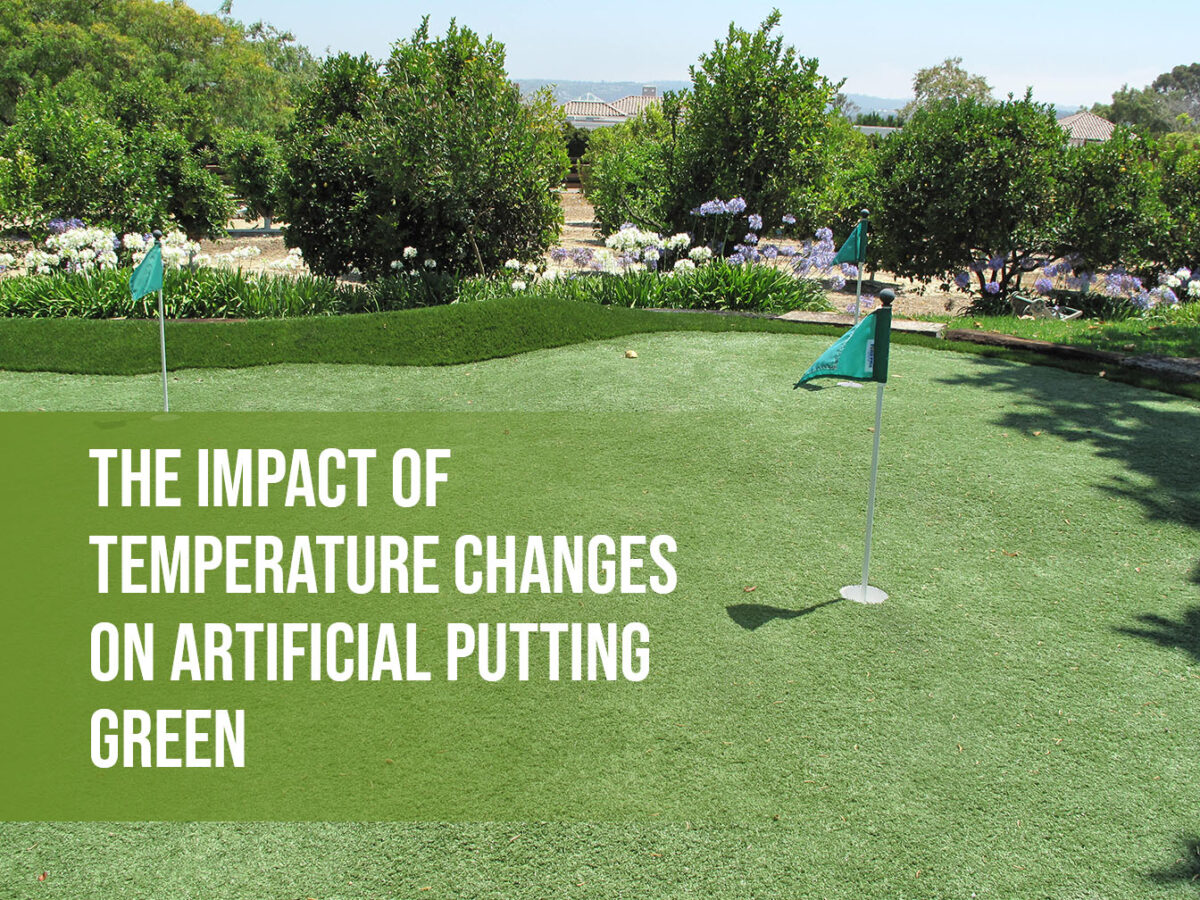- BACKYARD
- COMMERCIAL
- ENVIRONMENT
- FIELD TURF NEWS
- GOLF
- MAINTENANCE
- NEWS
- PETS
- POOL
- RESIDENTIAL
- TURF TIPS
How Do Temperature Changes Affect the Best Artificial Putting Green?

Whether you’re a golf enthusiast looking to practice your shots or a homeowner planning the perfect backyard leisure spot, the best artificial putting green is an incredible addition to any home. It’s a breeze to maintain and offers the perfect ball for games. It also handles temperature changes without sustaining damage, unlike natural turf. Here’s why:
Hot and Dry Temperatures
Natural putting greens wilt and brown in hot and dry temperatures because they need a lot of water and expert care to stay healthy. These conditions can also lead to harder ground, which can drastically affect the roll of the golf ball.
High-quality artificial grass is designed to withstand such extreme temperatures. Made from UV-protected synthetic materials, artificial turfs retain their lush, green appearance all year round, without requiring water or maintenance attention.
While the surface may heat up under intense sunlight, new technologies have led to the development of heat and light-reflective artificial grasses that stay cooler – making your putting green comfortable even on hot days.
Humid Temperatures
In humid temperatures, natural greens can be a breeding ground for mold, mildew, and other plant diseases—creating extra care requirements and negatively impacting the grass’s health and look.
The best artificial putting green, however, thrives in humid climates. It doesn’t support the growth of mold or mildew, thus ensuring a lush, green lawn regardless of the humidity level. The turf is designed with innovative drainage systems that quickly remove any surface water, allowing you to enjoy your game even after a downpour.
Cool or Moderate Temperatures
Cool or moderate temperatures are typically ideal for natural grass growth. However, these conditions can still necessitate regular care, including weeding, mowing, and fertilization, to maintain a good quality putting green.
Backyard artificial putting greens require minimal upkeep. They maintain color and structural integrity, allowing for a consistent, high-performance surface. The texture and bounce of the ball remain exceedingly consistent in artificial turf, regardless of the cool or moderate temperatures.
Freezing Temperatures
Freezing temperatures and snow can cause natural grass to go into a state of dormancy, look brown and unattractive, and even die in severe conditions.
On the flip side, the best artificial putting green can withstand freezing temperatures without damage. The surface might harden due to frost or snow, but it will quickly return to its regular state once it thaws. This advantage allows you to enjoy your backyard putting green even during cold winter months.
Embrace the Joys of a Weather-Resistant Putting Green
From scorching summers to bone-chilling winters, temperature changes can indeed pose significant challenges to maintaining a flawless, natural putting green. In contrast, high-quality artificial putting greens offer a durable, low-maintenance, and year-round green solution that seems almost impervious to temperature shifts.
If you’re considering installing an artificial putting green that can beat the weather odds, our team at Field Turf Landscape is ready to guide you through the process. Contact us today online or by phone at 866-352-4575 for a free consultation. Let us help you create the perfect putting green that withstands all temperature conditions.


